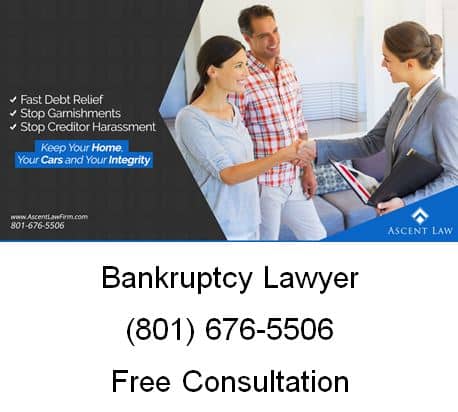For our readers playing along at home, the basic rule with mortgage modification in bankruptcy is as follows: first mortgages on a debtors primary residence cannot be modified by filing for bankruptcy, however, second, third and other junior liens can be modified or “stripped” by filing for Chapter 13 bankruptcy. Stripping a mortgage, removes the lien and treats the remaining mortgage debt as unsecured, often paid back at far less than 100% through a chapter 13 payment plan.
In order for a mortgage to be stripped, the debtor must prove that their home is underwater based on the outstanding balance of their first mortgage. To put it another way, you qualify for lien stripping in chapter 13 bankruptcy if an appraisal shows you owe more on your first mortgage than your home is worth. If this is the case, your junior mortgages are considered “under secured” and are vulnerable to the lien stripping process.
No Requirement That Debtor be Eligible for a Discharge in Order to Strip a Second Mortgage Lien
In an interesting recent decision out of the E.D.N.Y, In Re Miller, Bankruptcy Judge, Alan S. Trust holds that a debtor who was not eligible for a discharge could nonetheless strip his second mortgage by filing for Chapter 13 bankruptcy. The process is known as chapter 20 bankruptcy because debtors attempt to use a combination of chapter 7 and chapter 13 to achieve both debt forgiveness and mortgage modification. The debtor in the Miller case had filed for Chapter 7 bankruptcy two years before filing chapter 13 and was therefore ineligible for a second discharge. Section 1328(f) of the bankruptcy code provides:
the court shall not grant a discharge of debts provided for in the plan… if the debtor has received the discharge in a case filed under Chapter 7… during the four-year period preceding the date of the order for relief.
The rule stated here is simple: a debtor is ineligible for a second discharge under Chapter 13 if he or she received a prior discharge in a Chapter 7 case filed within four years of the current chapter 13 case. However, The rule says nothing about seeking mortgage modification after a chapter 7 discharge. The debtor in In re Miller did not challenge his ineligibility for discharge but argued that he was still entitled to strip his second mortgage in a chapter 20 scenario. The chapter 13 trustee objected even though, the second mortgage holder, Bank of America, did not. The court found that:
Section 1328 does not provide that the court may not confirm a plan for a debtor who is not eligible to receive the discharge in fact, neither section 1325 nor any other provisions of chapter 13 provides a plan may only be confirmed for a debtor who is eligible to receive the discharge. Because the bankruptcy code does not expressly make this distinction, this court therefore, includes that Chapter 13 debtor may strip off a wholly unsecured mortgage lien entreat the claimant’s unsecured under a plan whether or not such a debtor is eligible to receive a discharge.
How Does a Chapter 13 Case End Without a Discharge?
Towards the end of the opinion, the court addressed the question that is on most attorneys minds when they hear of the decision. How can a chapter 13 case end without a discharge? The case is closed rather than dismissed so that the relief provided by the bankruptcy filing is not wiped away at the end of the plan.
Some cases in this chapter 13 lien strip off area note that if a case is dismissed then, under § 349, any lien voided under § 506(d) shall be reinstated. However, § 349 is not applicable to lien stripping under § 506(a) where a debtor completes plan payments because that case will be closed, not dismissed. Further, while § 349(b)(1)(C) does provide for the reinstatement of a lien voided under § 506(d) if a case is dismissed, a stripped off lien is not voided under § 506(d), but is classified under § 506(a) as unsecured.
Great Results for You in Bankruptcy
Because of his previous chapter 7 bankruptcy, the debtor eliminated his personal liability for the second mortgage. The subsequent chapter 13 bankruptcy eliminated the second mortgage lien, effectively wiping out any liability the debtor may have had on the second mortgage outside of his chapter 13 plan payments.
Free Consultation with Bankruptcy Lawyer
If you have a bankruptcy question, or need to file a bankruptcy case, call Ascent Law now at (801) 676-5506. Attorneys in our office have filed over a thousand cases. We can help you now. Come in or call in for your free initial consultation.
8833 S. Redwood Road, Suite C
West Jordan, Utah
84088 United States
Telephone: (801) 676-5506
Recent Post


